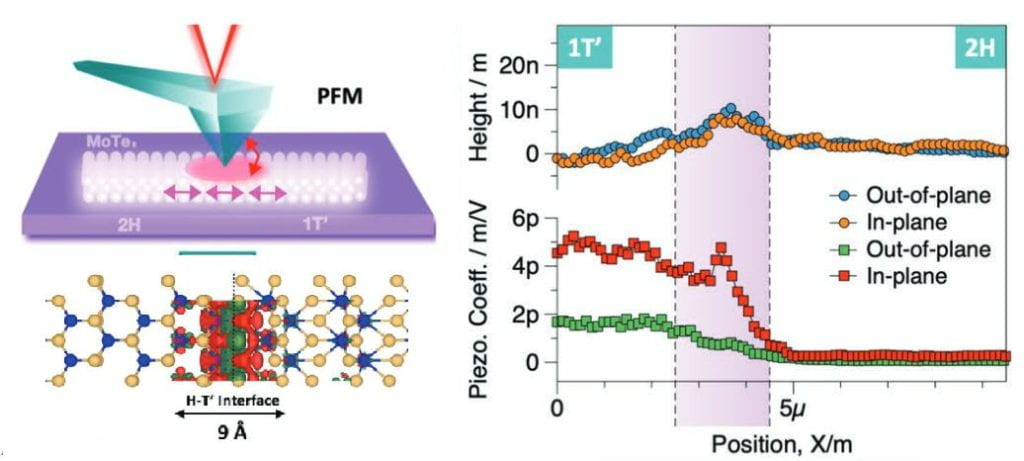Phase boundaries can exhibit new properties that neither of the two sides possess. In ultrathin 2D crystals of MoTe2, both the 2H and 1T’ phases have very weak, if any, inversion symmetry breaking, and thus do not have strong piezoelectricity. However, the metal-semiconductor junction between these two phases has a build-in electric field, so the wavefunctions are asymmetric at the boundary. In this work, we extracted the tiny displacement of these boundary atoms as a result of interfacial piezoelectricity in the CVD-grown 2H-1T’ MoTe2 homojunctions by vector piezoresponse force microscopy. The additional torque from the atoms was distinguished from electrostatic background, and qualitatively agreed with the first-principle calculations. Our findings demonstrate the versatility of boundary engineering in nanoscale electromechanical devices. See more news and details of this work in collaboration with Ajayan group at Rice MSNE.

